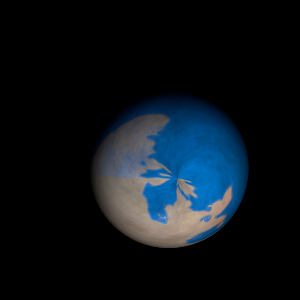|
|
Space Astro
|
Info for exoplanet "Cyleuke Steph"
| Scientific (actual) data |
|---|
| Name | Kepler-1538 b |
| Planet status | Confirmed |
| Radius | 0.252 |
| Orbital period | 175.139 |
| Discovered | 2016 |
| Updated | 2021-02-05 |
| Tconj | 2455130 |
| Publication | Announced on a website |
| Detection type | Primary Transit |
| Alternate names | 2MASS J18532297+4516280 b, K04009.01, KIC 8934103 b, KOI-4009 b, KOI-4009.01, WISE J185322.95+451627.7 b |
| Star name | Kepler-1538 |
| Right ascension | 283.35° |
| Declination | 45.27° |
| Mag j | 14.122 |
| Mag h | 13.829 |
| Mag k | 13.751 |
| Star distance | 1291 |
| Star metallicity | 0.02 |
| Star mass | 1.03 |
| Star radius | 1.03 |
| Star age | 4.37 |
| Star temperature | 5837 |
| Star alternate names | 2MASS J18532297+4516280, KIC 8934103, KOI-4009, WISE J185322.95+451627.7 |
| Wikipedia article | Kepler-1538 b |
Back
| |
| Fictional info (?) |
|---|
| Suggested name | Cyleuke Steph |
| Planet type | Cold planet |
| rather tricky trip.
The largest moon is inhabitated by unpredictable and earth-like bacteria known to survive close to volcanos by finding nourishment in plants. Most of them are somewhat similar to the Meras and have 3 arms and vary in size from 40 to 60 meters. Herraq-pokin can reproduce at temperatures from 100 to 170°C and even the acidic environment which is rare on this planet. |
| Estimated population | 22000000000 |
| Atmosphere | Water | 44% |
| Carbon dioxide | 35% |
| Oxygen | 21% |
| Methane | 0.013% |
| Atmospheric pressure | 0.012 bar |
 |
| Moon | Obefran'obejul | Small potato shaped gaseous moon |
| Google search for Cyleuke steph |
|
Website by Joachim Michaelis
|
|
|
|